It made history as one of the most significant political demonstrations ever to take place in Britain.
The Black People’s Day of Action march took place on March 2, 1981 – six weeks after the New Cross fire that claimed the lives of 13 young Black people.
A 14th victim, who had survived the blaze but was unable to cope with the trauma of seeing his friends perish, died by suicide two years later.
The question of whether or not “Black lives matter” predates the last few years; back in the 1980s, Black people felt there was a public lack of regard for the loss of young Black lives in the blaze.
The police were accused of not properly investigating what happened; the government was silent on the issue.

For many, it seemed as though Black lives were not of importance. The decision to mobilise was borne of frustration with that notion.
Many Black families felt the time had come to stop being compliant with a society that didn’t accept them.
Only 50 people were expected, but hundreds turned up to a meeting on January 25, 1981, at the Moonshot Club in Lewisham, a Black youth centre, and decided to march in protest.
The New Cross Massacre Action Committee was set up, led by the late Darcus Howe and John La Rose, which kickstarted plans for the day of action.
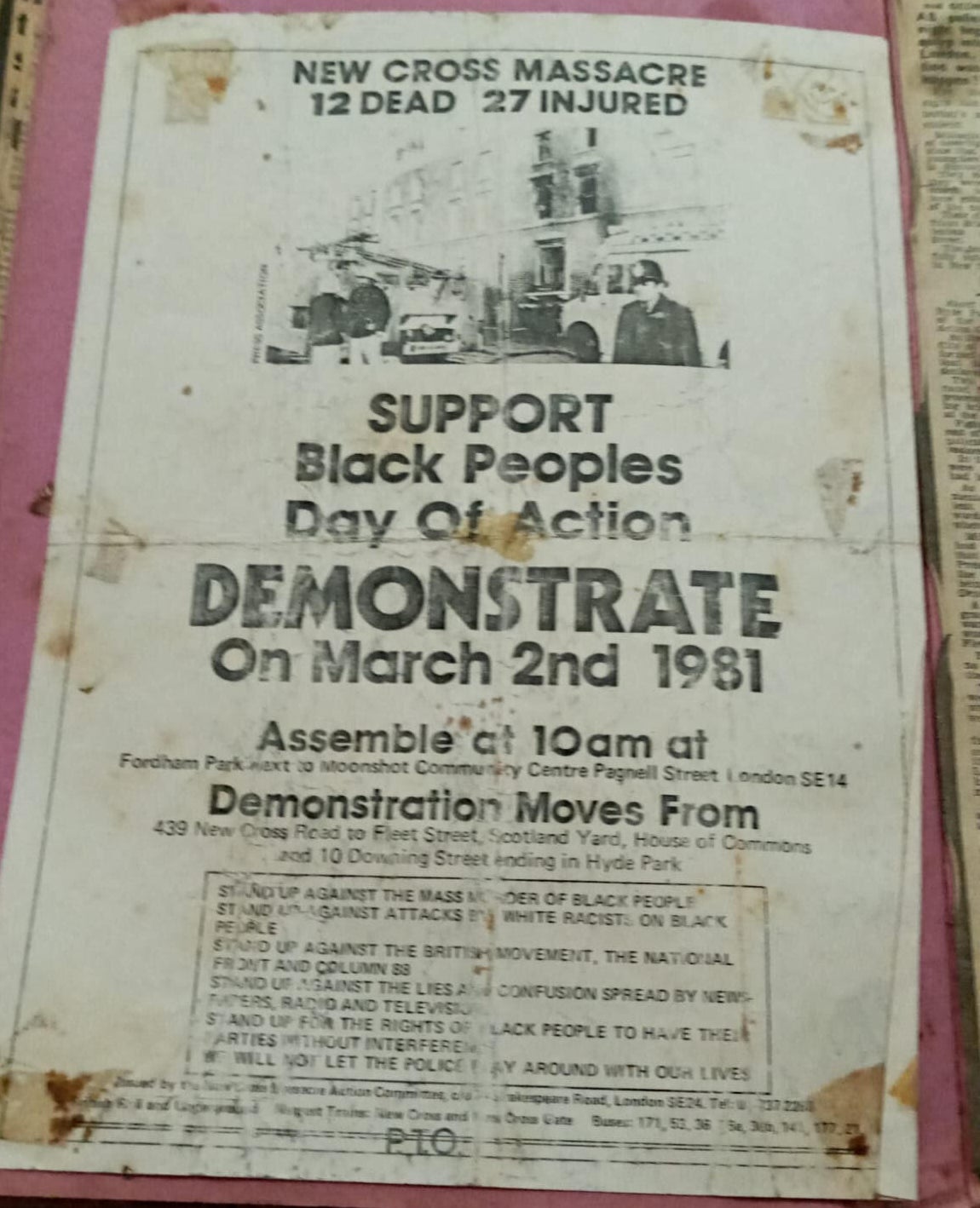
Some 20,000 people marched across London to demand justice for the victims of the New Cross fire and insist that the establishment listen to the Black community.
People came from as far as France to attend, and fleets of coaches descended into the capital from cities such as Birmingham and Manchester.
Some 13 red banners bearing the names of the victims – mainly children – were carried by the crowds in addition to a coffin to be left at No.10.
The demonstration stopped traffic on Blackfriars Bridge, brought Britain to a standstill and signalled a turning point in the movement for race equality.
It went on to spark a series of nationwide uprisings – also referred to as “riots” – in Brixton, Liverpool, Moss Side and other inner city areas in the months and years that followed.
“I think it’s important that the New Cross fire tragedy isn’t forgotten, particularly in the context of 2020 where we see it reflected in Grenfell, for instance – another huge fire which mostly affected ethnic minority communities”
- Joshua Anthony
The situation was further exacerbated by brewing racial tension. Police officers would harass young Black men through legislation such as the “sus laws”, while poverty and unemployment limited the prospects of many inner-city residents.
Some four decades later, the cause of the New Cross fire is still unknown.
Eye-witnesses suggested it was a racist arson attack; there was an account of a man who fled the scene in a white van.
The Lewisham area had a strong far-right presence, with regular attacks on Black people, community centres and youth clubs.
Three years before the New Cross fire, the Moonshot club – a Black community centre in Lewisham – was firebombed in December 1977, shortly after newspaper reports that burning down the club had been discussed at a National Front meeting.
The following year, the Albany centre in Deptford was set alight shortly after an anti-racism event was hosted there. A note was pushed through the door the following day saying “got you”.

Journalist Eddie Botsio, who has previously commissioned a documentary on the New Cross fire, told HuffPost UK: “When tragedies like this occur, grieving families look to the authorities for answers and for someone to be held accountable.
“Whether they’re Liverpool fans at Hillsborough, Stephen Lawrence’s parents in Eltham or the families of those who died at Grenfell, time and again ordinary people go to extraordinary lengths trying to get answers from those in positions of power.
“Yet in their pursuit of accountability, for many bereaved families, justice remains elusive and illusory.”
Still, one thing is certain: the fire and subsequent Black People’s Day of Action demonstration were a catalyst that led to widespread change in Britain. Things would never be the same again.
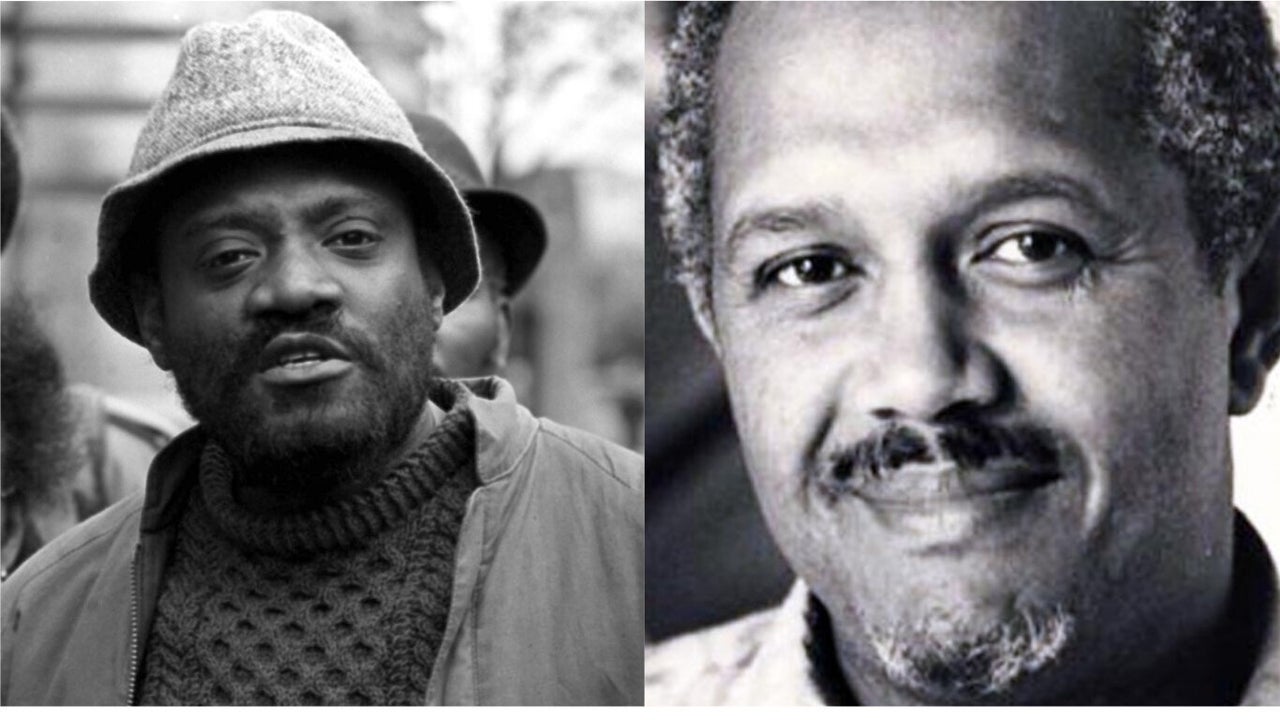
Leila Hassan Howe, Darcus’s widow and co-organiser of the march, told HuffPost UK: “People felt very strongly that, with all that had gone on with Margaret Thatcher and all of the racism at the time, this was really the final straw.
“People were angry that no one had taken the death of 13 young Black people seriously, by any stretch of the imagination.
“One of the things that angered us at the time was the way the media had treated this. They didn’t treat it as a racist attack – it didn’t really get a lot of attention, the politicians really hadn’t said anything – so we decided we were going to march.”
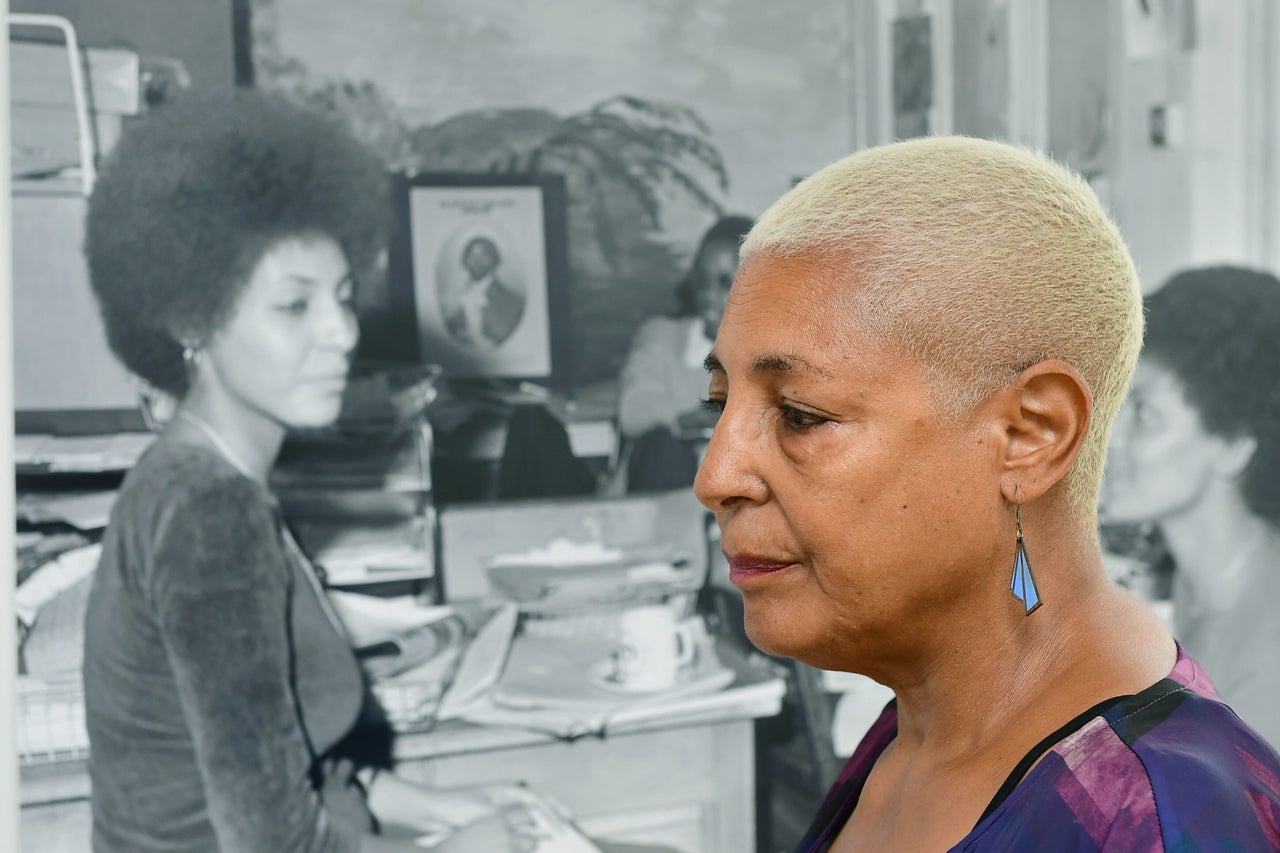
Leila, a former Black Unity and Freedom Party member, explained that the move was deliberately designed to disrupt society.
It was decided, at Darcus’s suggestion, that the demonstration take place on a working day, as opposed to a weekend, for maximum impact.
″We wanted to demonstrate in a different way,” she said. “We didn’t want to have a rally, on a Saturday, in Trafalgar Square with speakers and then everybody goes home.
“We had to show British authorities that this was a step too far and we’re not going to put up with it.
“Once we got moving, you could feel the power of that march. It was people marching with purpose.”
The route was agreed with the police beforehand but the demonstration snowballed. In no time at all, numbers quickly began to swell with people hopping off buses and leaving school to join the cause.
Calvin Francis, then 15, walked out of his class at Peckham Manor School to be a part of the protest. He was grieving the loss of his friend, Patricia Johnson, who had died in the blaze.
“I was supposed to go to that dance [where the New Cross fire broke out] that night, but the party I was at in Lewisham Way was sweeter,” he told HuffPost UK.
“When I got home, my granny was awake waiting for me and told me what she heard on the news – LBC radio.”
On the day of the march, he said, most of his school “just got up and walked out to join it” as it passed the gates.
“You could feel the power of that march. It was people marching with purpose.”
- Leila Hassan Howe
There was a confrontation between police and demonstrators when the procession approached Blackfriars Bridge and the authorities tried to stop them getting past, Leila said.
“Once we’d crossed Blackfriars Bridge,” she told HuffPost UK, “we were in commercial London and the police didn’t want the disruption, even though they had in theory agreed to the route.”
Though the march was largely peaceful, it was this clash that dominated news headlines with stories like “Day the blacks ran riot in London” in The Sun newspaper, “Black day on Blackfriars” and “Britain enters the era of the great terror!” – back when the National Front enjoyed the legitimacy of circulating its own publication.
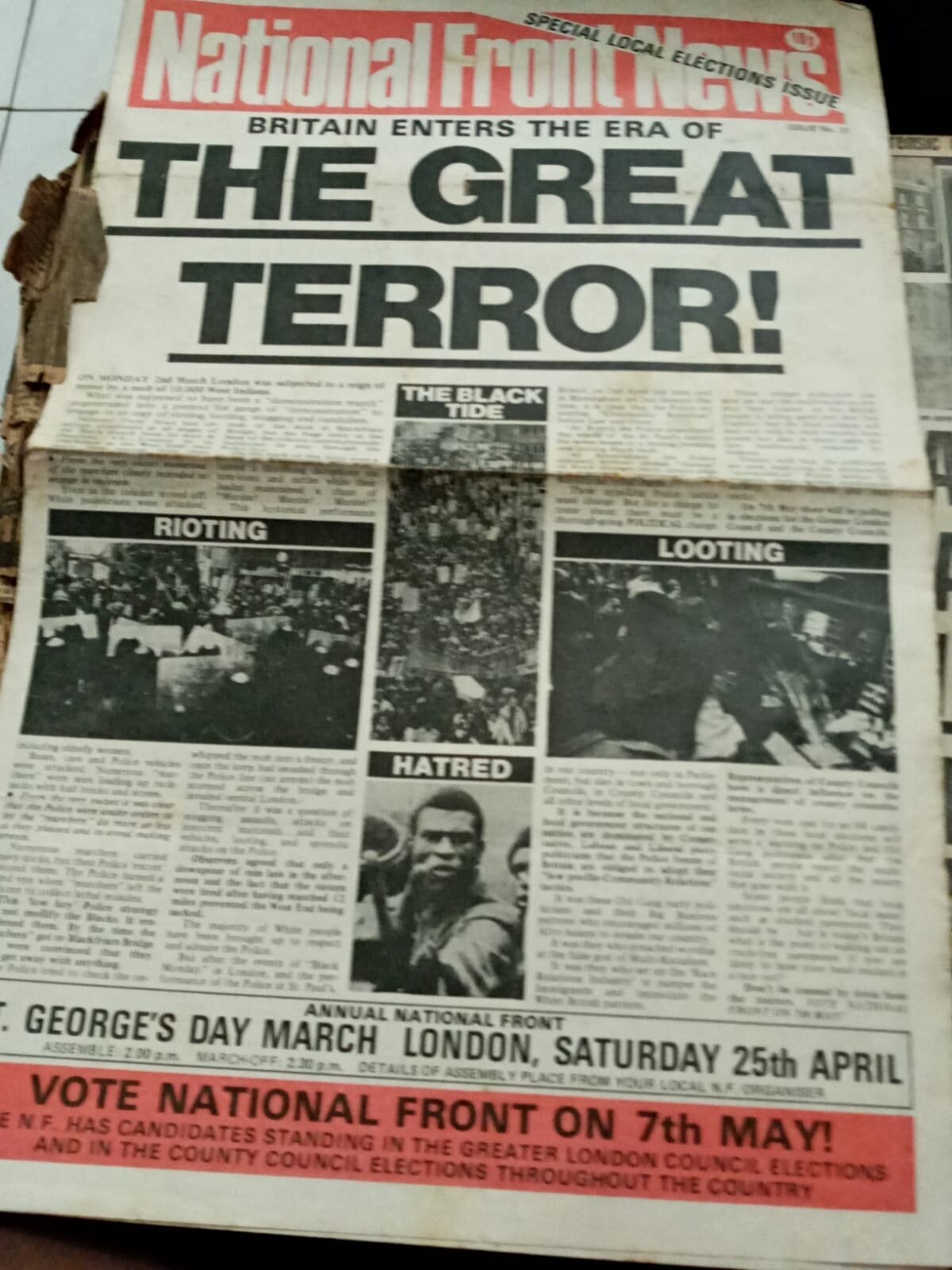
As protesters marched down Fleet Street, London’s newspaper capital at the time, accounts describe reporters hung out of windows shouting racist abuse, making monkey sounds and throwing banana skins at the crowd.
“All the newspapers were based there,” said Leila. “People who were working at the newspapers were hanging out of the windows, shouting abuse at us. But we were busy shouting ourselves, chanting ’13 dead, nothing said’, so we were making our own noise, I have to say.
“The coverage of the march was awful. It was very negative.”
June Thompson, an administrative worker, described the day as “significant”.
“I’d never been on anything like that in my life but I was inspired to go,” the 55-year-old told HuffPost UK.
Thompson was a part of the action committee and helped oversee the creation of the demonstration banners and “13 dead, nothing said” T-shirts. She still has hers, nearly 40 years later.
“One voice with one purpose – to get our message across,” she said. “At the time there was a lot of racial tension within the air. It came to the stage where people felt like enough is enough.
“I don’t know if we’ll ever see a day like that again.”
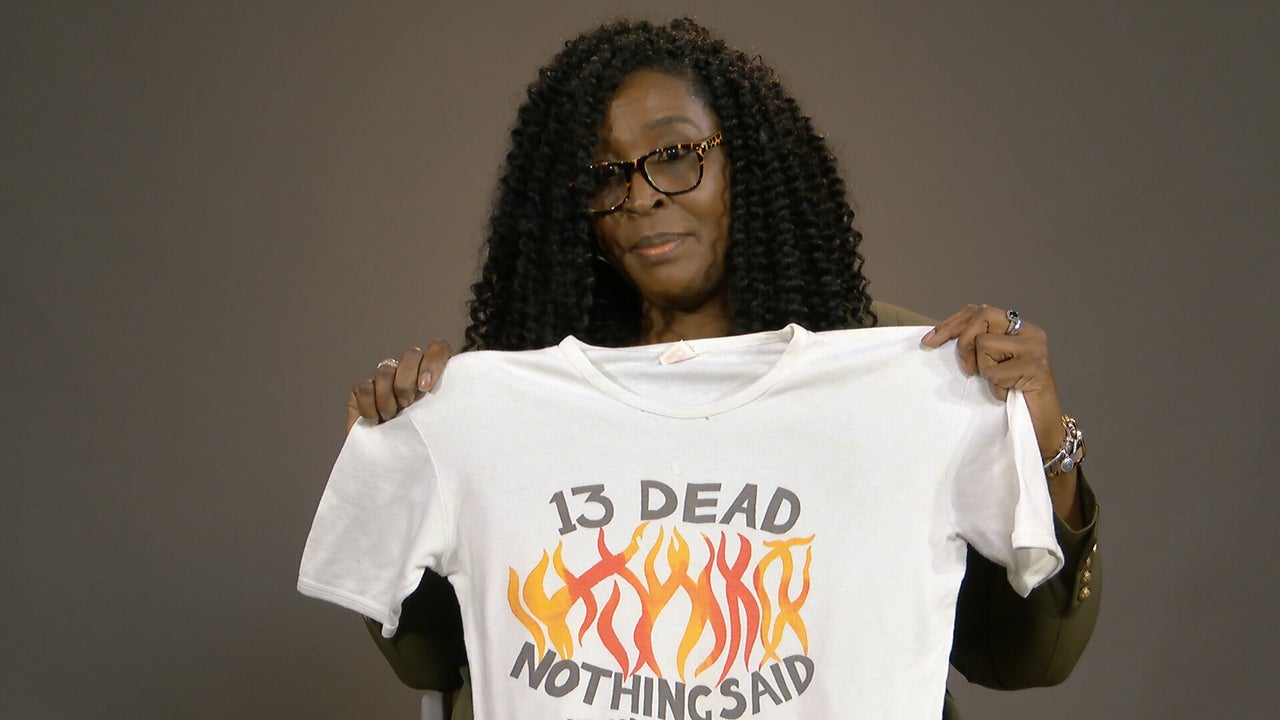
Wayne Haynes, 56, is a survivor of the New Cross fire.
It was his sound system, “Gemini”, that was providing the music in the house party and he narrowly escaped with his life after jumping out of a window.
He watched the Black People’s Day of Action march from his hospital bed where he spent six long months recovering from injuries sustained during the blaze.
“Do you know what? As a Black man, I am so proud of that day,” he told HuffPost UK. “They showed it [on TV] like it was a coronation. The whole day I lay my hospital bed in Greenwich District Hospital, smiling. We brought London to a standstill.”
Wayne, who believes far more than 20,000 people attended the march, said: “It wasn’t just a great day for Black people. It was a great day for Britain because, on that day, Britain showed the rest of the world that, hear what, we ain’t having it no more.
“The racism, the slavery, the everything – we’re not having it no more.”
As a result of the fire, Wayne has had 140 skin grafts after suffering first degree burns. He smashed his hip into 163 pieces, damaged his sciatic nerve and up until this day cannot feel anything below his knee.
The music connoisseur has a hole in his foot that won’t heal and damaged tendons; doctors have discussed the possibility of amputating his foot.
Wayne is now classed as being disabled, hasn’t been able to work since the tragedy, and doesn’t leave his house very often.
“Do you know what? The fire destroyed lives. We have no reason why it happened, who done it, why did you do it?”
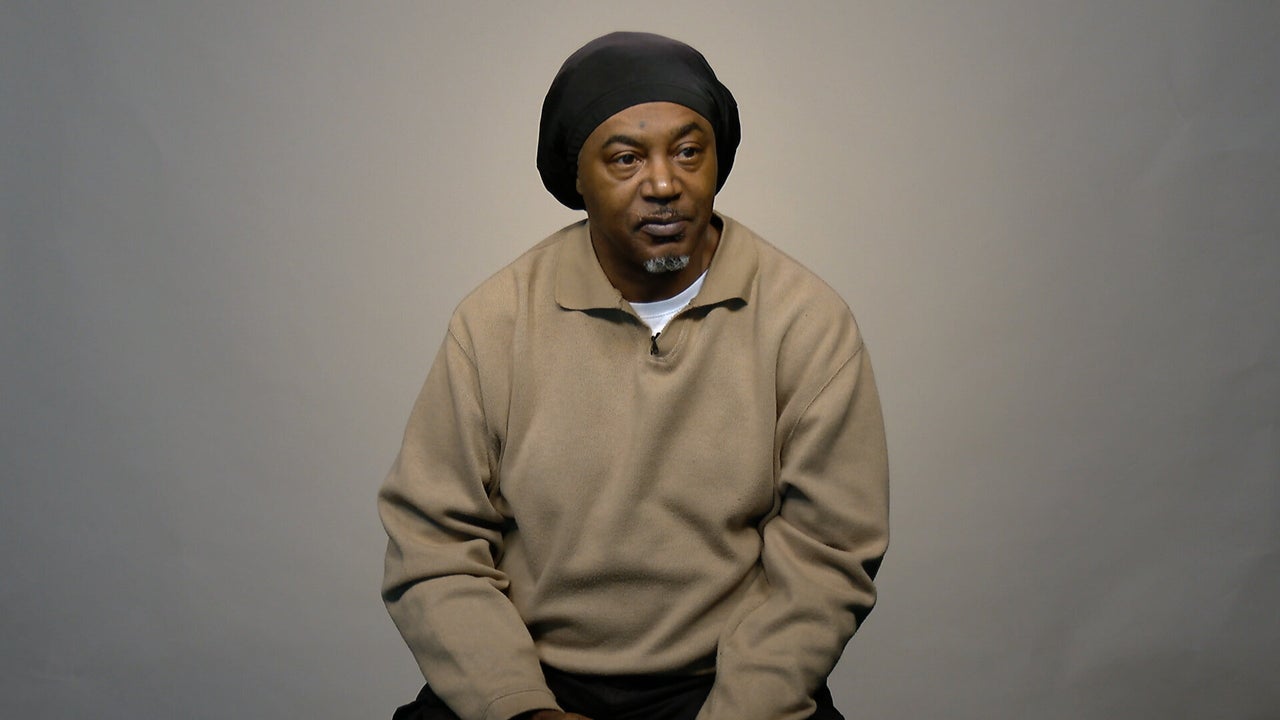
He continued: “As soon as anyone mentions the fire, I don’t even think about myself. I think about those kids first. For most of those parents, they’re going to die and never know what happened to their children. For most of those children, for which I knew most of, they didn’t get a chance to live.”
There were 56 survivors, he says, and the consequences have been severe. One man has a psychiatric breakdown on the fire anniversary, every January, without fail.
“There are other people out there whose minds, it’s just not working for them. Their brain, every year coming up to January, their mindset is gone. They’re the people that I think of.
“Not one of the 56 injured got counselled, not one of us.
“If this had happened anywhere else in the world, there’d probably be 56 millionaires. We’ve got nothing. Right now, I’m still fighting for them to give me back my disabled card that they took away last year. That’s what this country’s done for me. That’s what they’ve done for these people in the fire.”
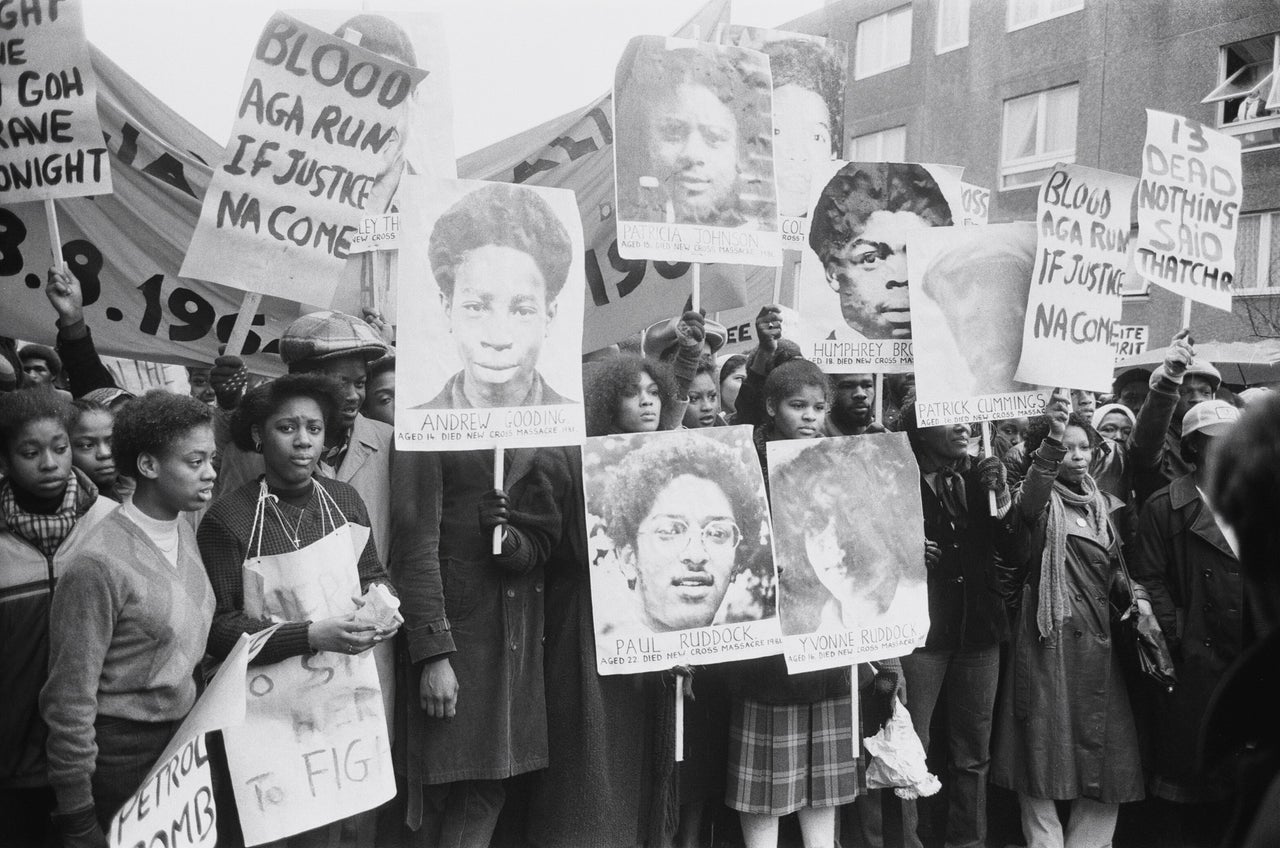
While Brother Leader Mbandaka, co-chair of the National Afrikan People’s Parliament, didn’t attend the day of action, he followed news of the demonstration closely. It would help spur him into political activism years later.
“I felt hopeful, overwhelmed by the whole thing. As a young man, knowing that so many of our people came out, took a stand, seeing footage of thousands of African people marching the streets, I really felt empowered,” he told HuffPost UK.
“Only a couple of years later, I started to engage in community activism and the New Cross massacre was certainly one of the events of history that inspired me in that direction.
“When you think about the day of action, 25,000 African people took to the streets and that really shook up the establishment.
“I don’t think we would’ve seen all of these positive changes for racial equality had it not been for the ‘turbulent 1980s’ which helped to break down barriers.
“But I think our focus switched from continuing to organise independently for the empowerment of our people to the point that we can establish an independent, national representative body that can promote, preserve and protect the best interests of African people in the UK.”
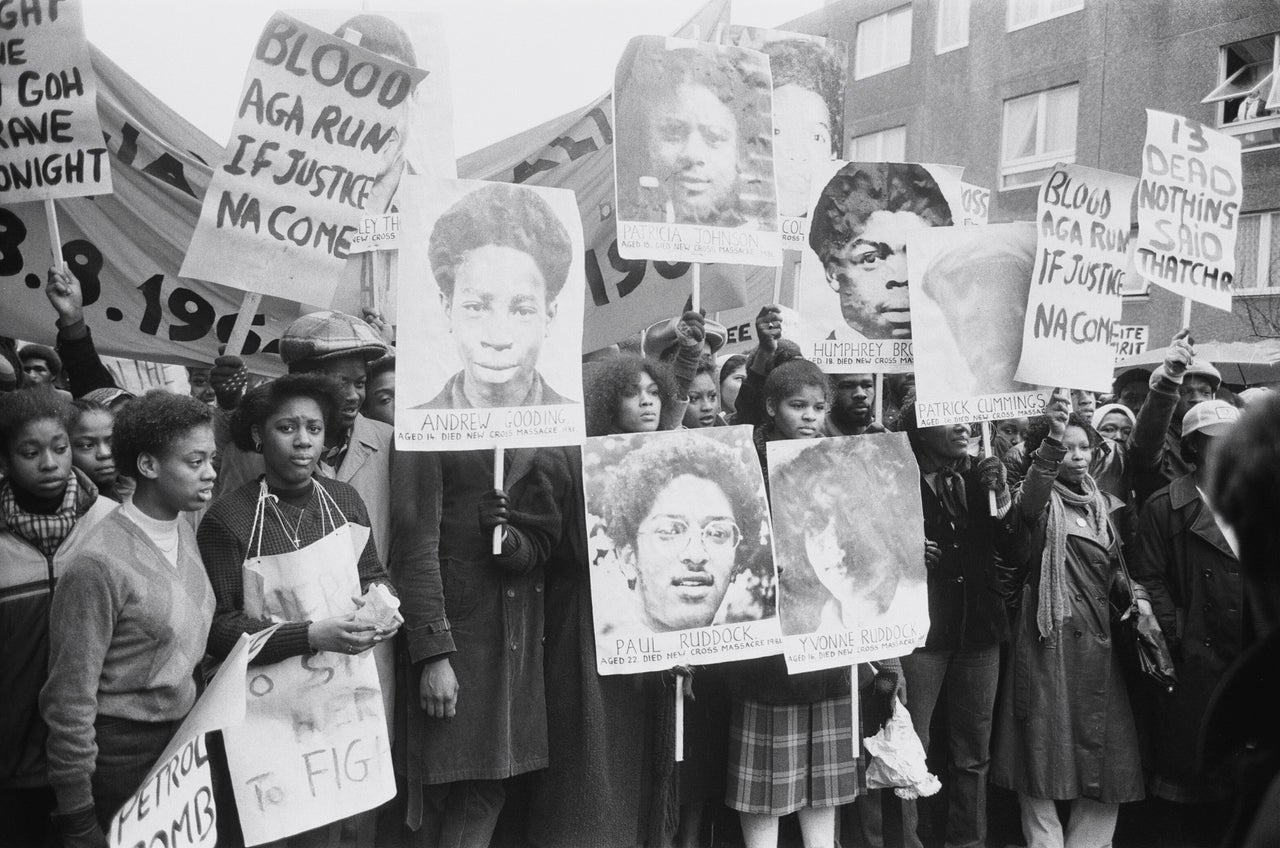
Broadcaster Trevor Phillips described the march as “a revelation to everyone else and a shock to the Black community itself”.
“This was the first time that Black Britons had ever mobilised in such numbers – and the march was exclusively composed of black people,” he told HuffPost UK.
“The Black People’s Day of Action made visible for the first time the quiet rage of a community better known for Carnival and church at its treatment by the authorities.
“This wasn’t a march of radicals. Perhaps the most telling fact was that people of all ages and backgrounds joined the march – in fact as we were filming live we talked to people who had seen it from their office window, and there and then decided to leave their desks, put on their coats, and join the demo.”
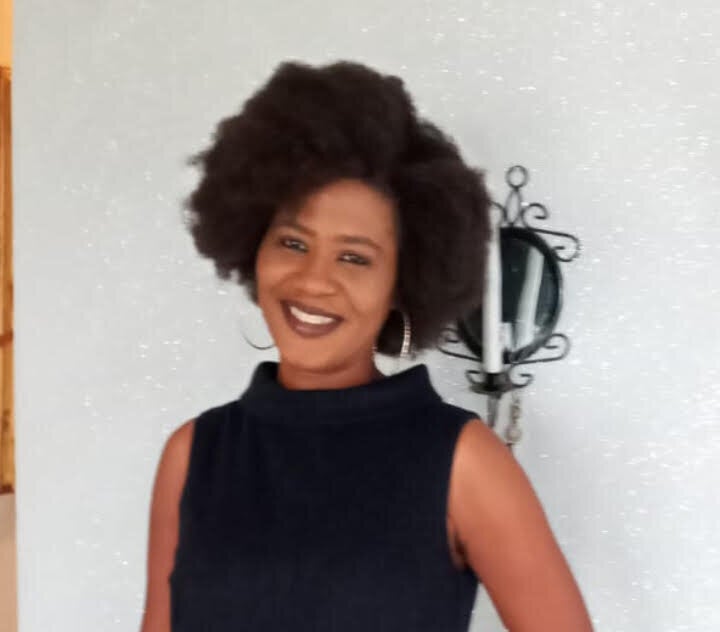
Aged 14, Maria Carter joined the demonstration with her older sister.
“That was the only time I missed school, as opposed to being sick, but my mother knew that I was going; I wanted to be a part of it,” she told HuffPost UK.
“I had this sense of Black pride. I was really enthused and overwhelmed by the outpouring of support, and was overwhelmed by the amount of people that turned up.
“What I found really shocking to me was the very next day after the march, looking at the tabloids – The Sun in particular, The Mirror – and seeing their reports and thinking: ‘This isn’t what I witnessed.’ actually cried reading some of the accounts, and I still have them. I bought all of the papers involved with that march, but I could not recall what they reported having seen.”
She added: “When we were planning at the time, a lot of people might have scoffed at this, said ‘nothing’s gonna happen’ – but we’ve never seen the gathering of Black people on such a large scale before in London. When it happened I think it shook and shocked people. They never thought it could actually happen.”
“When the march was coming along Fleet Street, which was at the time the headquarters of our newspapers, you’ve got the reporters hanging out the windows calling us monkeys, (shouting) ’n****rs go home. The same reporters that are writing the stories.”
- Wayne Haynes
Maria, now 53, and her older sister were a part of the action committee that organised the march. She has kindly supplied HuffPost UK with archive newspaper articles that she collected at the time for a scrapbook.
“I didn’t know the march would be a part of history at the time – but I was always really proactive when it came to civil rights and our rights as Black people,” she explained.
“I tip my hat to the late Darcus Howe for spearheading it.
“My sister and I sat with him – we were part of the action committee, we would attend meetings in Deptford. He was really instrumental in a lot of planning; he took a lot of flak from the media but it didn’t let it deter him; he kept going.”
Some people felt it took too long for those well placed in society to offer condolences to the Black community about the fire. By contrast, when tragedies happened to white people, the condolences would be free and forthcoming.
“We felt we were being ignored, that our Black suffering wasn’t akin to the white suffering and we were somehow second class citizens,” said Maria.
The fire, plus racial tensions before and after, stoked a sense of disenchantment within Carter that saw her leave Britain for Barbados – the land of her parents.
“I’d had enough,” she told HuffPost UK.
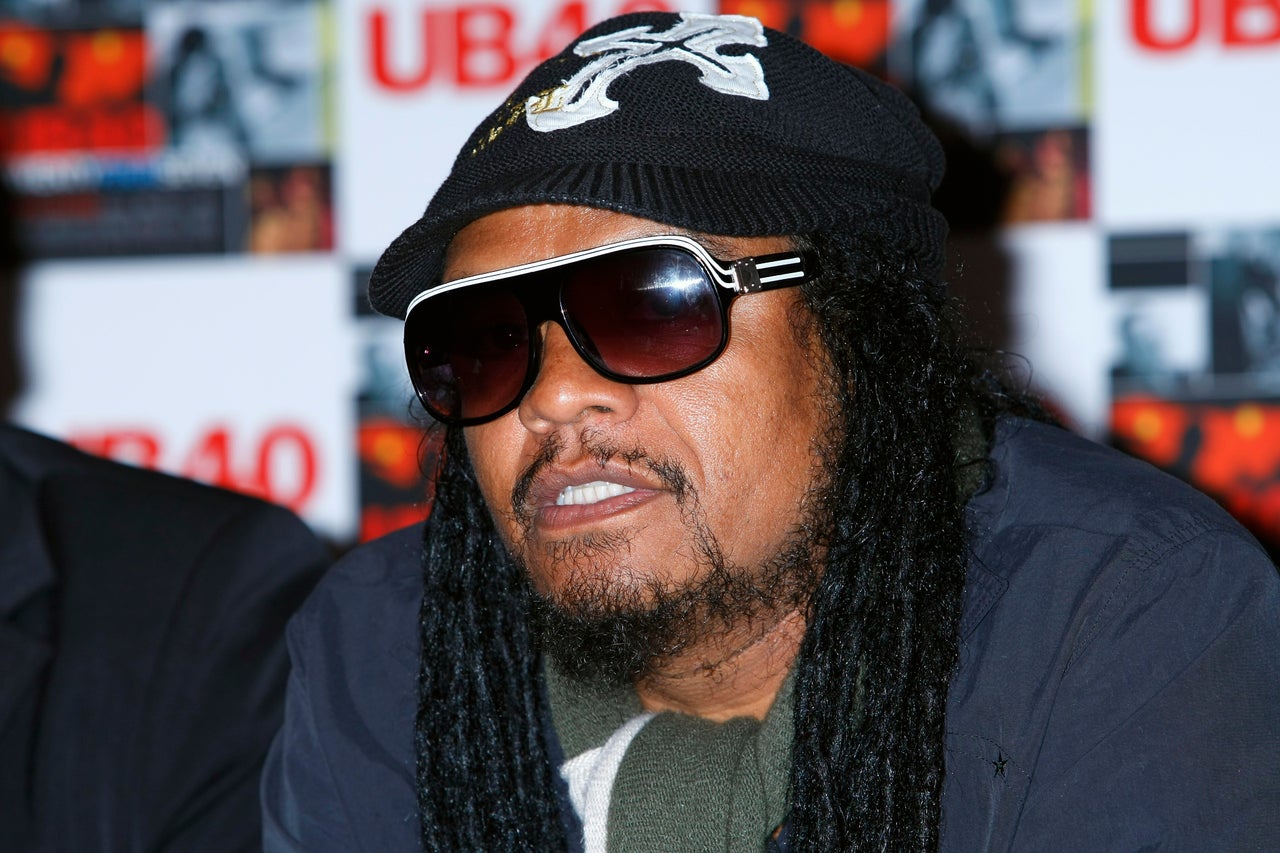
Grammy award-nominated singer Maxi Priest grew up in Lewisham, just 20 minutes from where the fire happened. He was a part of the demonstration.
On the night of the fire, he was out with his brother attending another house party but had planned to head to the one in New Cross.
“We were all united in grief over what happened and that’s also what drove that march,” he told HuffPost UK.
“I grew up with most of the people who were in that fire.
“News of the fire spread like wildfire. By the end of the night everybody had heard about the whole situation. We grew up together. I lost some very good friends in there like Peter Campbell and Gerry Francis.”
The “Close To You” singer said he had a “burning feeling of anger” about the whole situation.
“We marched several times for various situations in New Cross because of injustice against Black people; that was the climate of racism at the time,” he explained.
“We walked in twos and three and fours; as brothers and sisters and also as friends, running from some skinhead, greasers, or any of those kind of [racist] people.
“Black people were fighting for some existence, some recognition, some value to the fact that we were born here. We didn’t ask to come here and here we are with people telling us to leave and ‘go back to your own country’.
“I don’t know anybody from the government or establishment who came to check for us. Prince Charles came down to Moonshot Club after it was on fire; why he did, I don’t know, but I didn’t see anybody else.”

Years after the Black People’s Day of Action march, the impact of the New Cross fire continues to reverberate.
This is something Joshua Anthony’s family have to live with for the rest of their lives.
His uncle, Peter Campbell, died in the blaze aged 18 and Joshua has watched his grandmother campaign for justice on behalf of her late son ever since.
“This is someone who campaigned in the ’80s, ’90s, all the way through the 2000s, and [...] yet there was no resolution, there was no support,” said the 28-year-old.
“I think it’s important that the New Cross fire tragedy isn’t forgotten, particularly in the context of 2020 where we see it reflected in Grenfell, for instance – another huge fire which mostly affected ethnic minority communities.
““We were all united in grief over what happened and that’s also what drove the Black People's Day of Action march”
- Maxi Priest
“Again, we see how investigations aren’t done in the most transparent way and [it’s] not necessarily the right people who are leading these investigations.”
Shortly after the Brexit referendum result in 2016, Norman Durker witnessed a woman ranting about the fire on the bus in south-east London.
Echoing Wayne’s description of the mental anguish caused by the tragedy, he told HuffPost UK: “An air of anxiety was starting to develop [after the result] – I remember it clearly.
“It was all kicking off with an increase in racist incidents and the woman was muttering to herself, and ranting a bit, about the New Cross Fire and talking about death.”
Adding that he thought she was suffering from some type of post traumatic stress disorder, the 71-year-old said, “I think was probably had mental health issues and able to just about function on a minimal level.
“The woman was talking about something that happened over 30 years ago and that, in itself, is an indication of unresolved trauma. You don’t need to be a professional to realise that.”

Norman added: “I think she must have been involved in some direct or indirect way. Whether it contributed to her state, I just don’t know. For someone to come out of the blue and talk about some event that people have largely forgotten about is telling.”
Dr Aaron Andrew, a historian who has been researching the New Cross fire as part of his “Forged By Fire” project, told HuffPost UK: “The implication of the state’s silence over the deaths was that Black people didn’t belong within British society.”
On the importance of his research into the topic, he continued: “When we think of today, with the Windrush scandal and the way that the Grenfell community has been treated by parts of the state, there’s almost a moral and political responsibility to make sure that this story is fully integrated within that larger British history.
“That assertion of belonging and rights which was denied is something that’s really important.”
